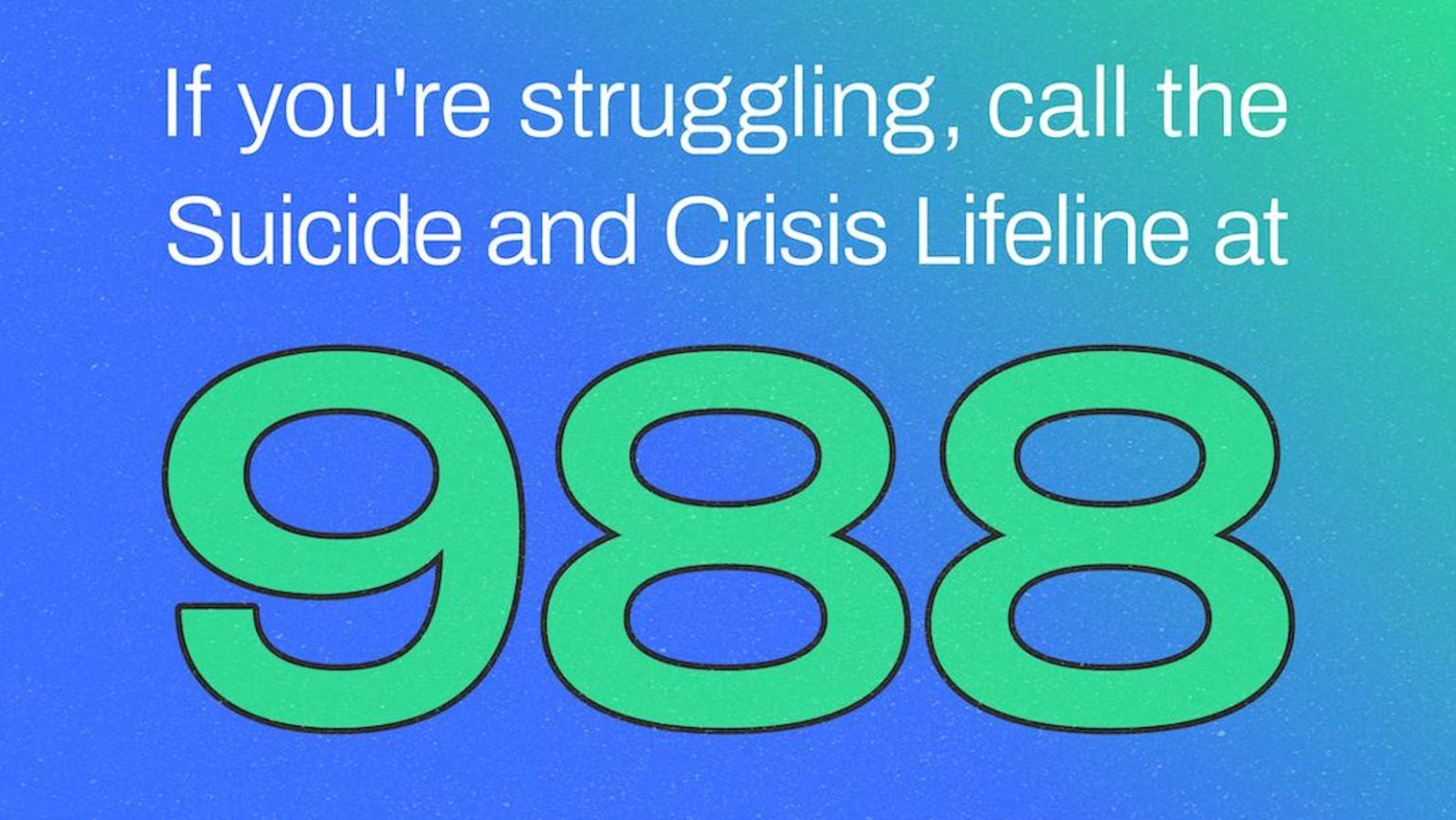In 2021, 48,183 people died by suicide in the United States. As the suicide rate continues to increase, it is more important than ever to ensure that everyone struggling with their mental health receives the support and services they need in a timely manner.
In July 2022, the National Suicide Prevention Lifeline transitioned from a traditional 10-digit phone number to a shorter, more memorable 3-digit dialing code: 988. Over the next 12 months, the Lifeline has received nearly 5 million calls, texts, and chats, 2 million more than the previous year, according to the Substance Abuse and Mental Health Services Administration (SAMHSA). Despite an increase in call volume, SAMHSA reports that answer rates have increased and answer speeds have decreased significantly. These results are encouraging, but it’s only the first step toward reimagining our crisis system and increasing access to life-saving mental health care.
What is 988 vs. 911?
The renamed 988 Suicide and Crisis Lifeline, administered by Vibrant Emotional Health in collaboration with SAMHSA, connects individuals with resources and support during a suicide, mental health, or substance use crisis. 988 uses a network of over 180 independently operated state and local crisis centers to reach callers throughout the United States. However, 82% of Americans are unaware of what 988 is and what it provides, according to a recent poll from the National Alliance on Mental Illness (NAMI).
The ultimate goal of 988 is to provide an effective alternative to 911, so that individuals experiencing a crisis can receive appropriate and supportive assistance during their time of need. Many 911 operators are not trained to address mental health crises and may involve emergency services or law enforcement when it is not necessary or productive. Some people who call 911 while in a psychiatric crisis may be taken directly to a hospital emergency department, where they are held for hours or days and often involuntarily confined. Additionally, certain policies, such as handcuffing people to transport them to psychiatric hospitals, can deepen the association between mental illness and criminality, establishing an overreliance on police departments to manage mental health crises.
988 reduces the role of law enforcement in crisis intervention by increasing the involvement of mental health professionals who are trained to manage these situations carefully and effectively. SAMHSA reports that almost 98% of people who call, chat, or text the 988 Lifeline get the crisis support they need and do not require additional services in that moment. However, police and 911 still play an important role in situations where someone is armed and/or physically threatening to hurt themselves or others.
If you or someone you know is in imminent danger, you should call 911 or a 988-crisis counselor will connect you to 911 to ensure that medical attention is provided.
What happens when you call 988?
When you call 988, you will be connected to a crisis counselor who will listen to you, understand the reason for your call, provide support, and share specific resources to address whatever challenges you are facing. The Lifeline offers live call, text, and chat services in Spanish and uses Language Line Solutions to provide caller translation services in over 240 additional languages, including American Sign Language. To call a Spanish-speaking crisis counselor dial 988 and then press 2. To text with a Spanish-speaking crisis counselor, text AYUDA to 988.
988 also offers specialized services for disproportionately impacted communities, including veterans and LGBTQ+ youth. Veterans and active service members can access the Veterans Crisis Line 24/7 by texting 838255 or calling 988 and pressing 1. LGBTQ+ youth under 25 have the option to speak with a specially trained, LGBTQ+-competent counselor by phone 24/7, or via text or chat from 3 pm to 2 am ET. Callers will be asked if they would like to opt-in to this service before they are connected to a crisis counselor.
988 and the Future of Mental Health Care
Without a systemic approach to transforming mental health care, 988 is simply a new phone number. For 988 to be successful, we must improve the quality of treatment at all stages of the continuum of care. Similar to how we have a system in place for heart health – routine check-ups and screenings for prevention, transportation to the emergency room if someone experiences a heart attack, and follow-up care provided post-charge–the same should be implemented for mental health.
Christine Yu Moutier, MD, the Chief Medical Officer at the American Foundation for Suicide Prevention, also points out some evidence-based strategies that can guide clinicians, healthcare systems and governing bodies to mitigate suicide risk. This includes addressing risk at the moment of crisis, specifically, “increased federal investments, as well as less punitive law enforcement responses, and exploration of alternative resources for responding to mental health crises such as mobile crisis units or residential crisis centers are also needed.” As 988 grows, mobile crisis response teams are being built out in states like Arizona, Georgia, and Oregon, where they provide immediate assessment, stabilization, and treatment from trained mental health practitioners, as well as instituting follow up or continuity of care after the initial crisis.
Federal, State, and Local Funding for 988
As more and more people learn about 988, calls, chats and texts will naturally increase, which will necessitate increased support for federal, state, and local funding for the 988-crisis response system, including the Lifeline and its networks of independently operated state and local crisis centers. Funding increases could also support the advancement of a much-needed crisis care continuum across the country. To date, the Biden-Harris Administration, with bipartisan support from the U.S. Senate and House of Representatives, has invested nearly $1 billion in 988 to increase the capacity of crisis response centers, expand chat and text services, and provide inclusive crisis care to marginalized groups.
In addition to federal funding, state support is needed meet current and anticipated demand for crisis calls and follow-up care. When local crisis response services receive the support they need, they are able to save more lives. Only 8 states have passed legislation to support 988, according to a report from NAMI, and many rural states, where suicide rates are among the highest in the country, have no long-term plans in place to maintain the Lifeline in the absence of federal funding.
When paired with an effective crisis response model and a sustainable source of funding, 988 becomes not just a 3-digit phone number, but a beacon of hope for the future of mental health care in the United States. For more information on how to support the expansion of 988, visit afsp.org/988-suicide-and-crisis-lifeline.
The “Hiding in Plain Sight” Blog supports the 2022 documentary series Hiding in Plain Sight: Youth Mental Illness (Now streaming on the PBS App), and the upcoming 2025 series, Hiding in Plain Sight: Adult Mental Illness, produced and directed by Ewers Brothers Productions, executive produced by Ken Burns, and presented by WETA, the PBS flagship station in our nation’s capital.
For more information: #WellBeings #WellBeingsLive WellBeings.orgYou are not alone. If you or someone you know is in crisis, whether they are considering suicide or not, please call 988 or the toll-free National Suicide Lifeline at 800-273-TALK (8255) to speak with a trained crisis counselor. If you don’t want to talk on the phone, you can also text. Crisis Text Line offers free mental health support. Text “10-18” or “SCRUBS” to 741741 for help. The call and text lines are open 24 hours a day.
Read the full article here





